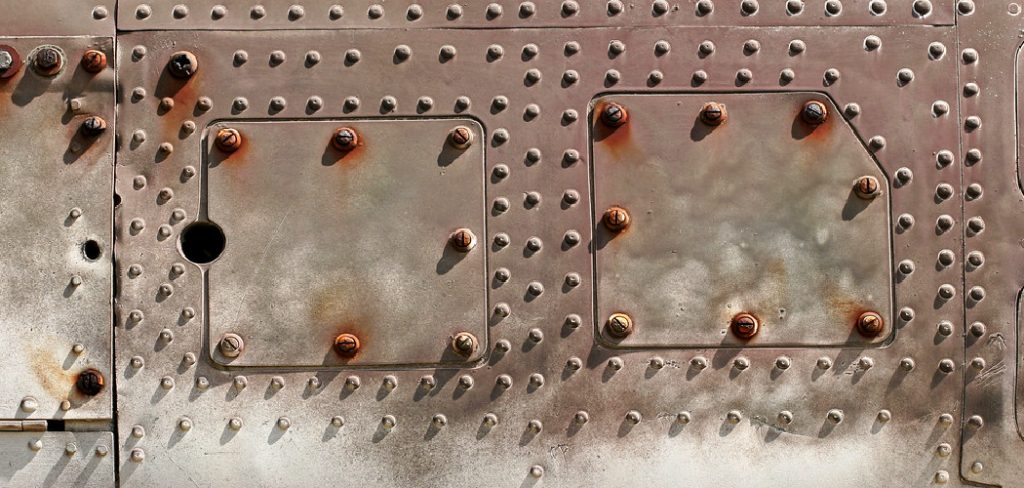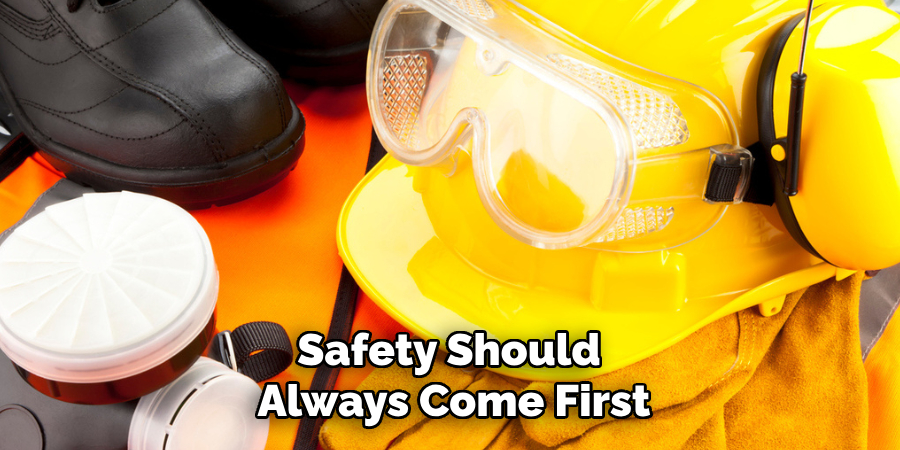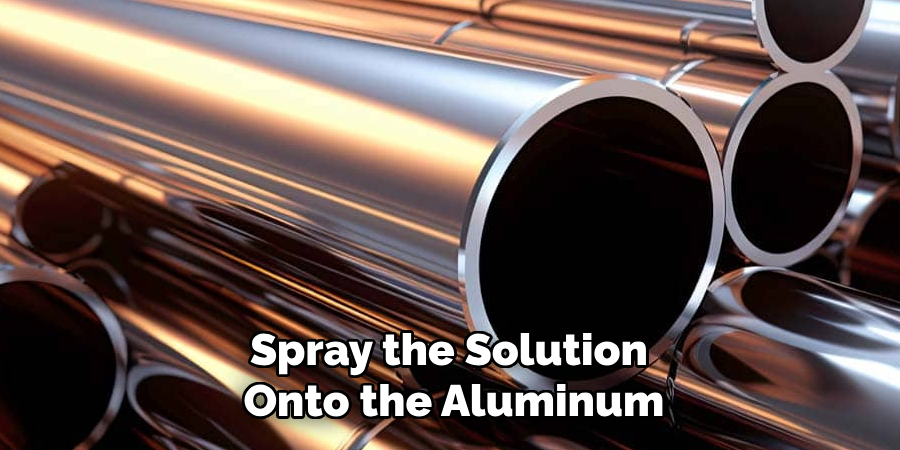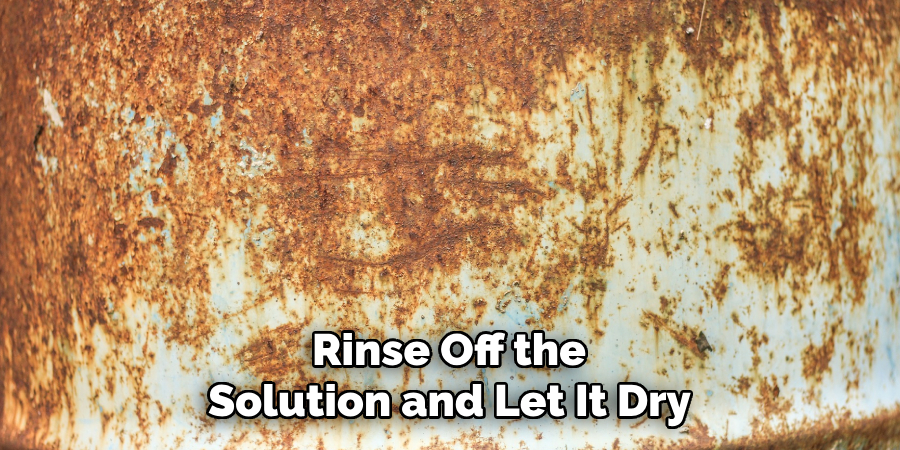Aluminum is a highly versatile and widely used metal known for its durability and resistance to corrosion. However, there can be instances where inducing a weathered, rust-like appearance on aluminum is desirable, particularly for artistic or aesthetic projects. Unlike iron, aluminum doesn’t rust in the traditional sense, as it doesn’t contain iron to form iron oxide. Instead, it forms a protective layer of aluminum oxide when exposed to the air.

This guide on how to rust aluminum will explore methods to safely and effectively create a rusted look on aluminum surfaces, achieving the characteristic antique effect without compromising the metal’s integrity.
Why Rust Aluminum?
Before diving into the methods of rusting aluminum, it’s essential to understand why one would want to do so in the first place. As mentioned earlier, aluminum is a sturdy and durable metal that doesn’t easily succumb to corrosion. However, for certain creative projects or home decor items, giving aluminum a rusted appearance can add character and depth.
For example, if you’re working on a steampunk-inspired project or looking to create industrial-style decor pieces, rusted aluminum can be an excellent choice for achieving an authentic look. Additionally, rusted aluminum can also be used in outdoor sculptures or furniture for its weathered appearance, making it seem like it has withstood the test of time.
Needed Materials
To successfully rust aluminum, you’ll need a few materials that can be easily found at your local hardware or craft store. Here’s a list of the essential items you’ll need:
Aluminum Piece(S) to Be Rusted:
This can be in the form of sheets, plates, or other aluminum objects that you want to rust.
Rusting Solution:
There are various options for rusting solutions, such as vinegar and bleach mixtures or commercial rust-inducing products. We’ll discuss some of these methods in more detail later on.
Spray Bottle or Brush:
Depending on the method you choose, you’ll need either a spray bottle or a brush to apply the rusting solution onto the aluminum surface.
Protective Equipment:
Safety should always come first when working with chemicals. Be sure to use gloves, goggles, and a mask when handling the rusting solution.
Safety Precautions
As mentioned earlier, safety should always come first when working with chemicals. Here are some general precautions to keep in mind when rusting aluminum:

- Always wear protective equipment such as gloves, goggles, and a mask when handling chemicals or rusty aluminum surfaces.
- Work in a well-ventilated area to avoid inhaling fumes.
- Follow the instructions on the rusting solution carefully and handle it with caution.
- Dispose of any leftover rusting solutions according to local regulations.
8 Step-by-step Methods on How to Rust Aluminum
Method 1: Vinegar and Bleach Mixture
- Prepare your aluminum piece(s) by cleaning them with soap and water to ensure they are free from any dirt or oil.
- In a well-ventilated area, mix equal parts of white vinegar and bleach in a spray bottle.
- Spray the solution onto the aluminum surface and let it sit for a few minutes.
- Using a brush, scrub the surface to create texture and spread the solution evenly.
- Let the solution sit for at least an hour or more, depending on how rusty you want your aluminum piece(s) to look.
- Rinse off the solution with water and wipe dry.
- If desired, repeat steps 3-6 until you achieve your desired rusted look.
- Seal the rusted aluminum with a clear coat spray to prevent any further oxidation.
Method 2: Saltwater Soak
- Clean your aluminum piece(s) with soap and water as in method one.
- Fill a container or tub with water and add a generous amount of salt, stirring until dissolved.
- Submerge the aluminum piece(s) in the saltwater solution for several hours, depending on how much rust you want to achieve.
- Check on the pieces periodically and remove them once they have reached your desired level of rust.
- Rinse off the saltwater solution and let it dry before applying a clear coat spray to seal it.
Method 3: Hydrochloric Acid Solution

- Clean your aluminum piece(s) as in previous methods.
- In a well-ventilated area, mix one part of hydrochloric acid with four parts of water in a spray bottle.
- Spray the solution onto the aluminum surface and let it sit for a few minutes.
- Using a brush, scrub the surface to create texture and spread the solution evenly.
- Let it sit for an hour or more, depending on your desired level of rust.
- Rinse off with water and let dry before sealing with a clear coat spray.
Method 4: Baking Soda Paste
- Mix equal parts baking soda and water in a bowl to create a paste.
- Apply the paste onto the aluminum surface using a brush or cloth.
- Let it sit for several hours, checking periodically until you achieve your desired level of rust.
- Rinse off the paste and let it dry before sealing it with a clear coat spray.
Method 5: Iron Acetate Solution
- Clean your aluminum piece(s) as in previous methods.
- In a glass jar, mix one part white vinegar with two parts iron dust or filings.
- Let the mixture sit for several days until it turns into a dark liquid.
- Apply the solution onto the aluminum surface using a brush or cloth.
- Let it sit for several hours, checking periodically until you achieve your desired level of rust.
- Rinse off the solution and let it dry before sealing with a clear coat spray.

Method 6: Commercial Rusting Products
- Follow the instructions provided by the manufacturer of your chosen rusting product.
- Generally, these products come in liquid form and can be applied using a spray bottle or brush.
- Some may require a specific amount of time to sit on the aluminum surface before being rinsed off.
- Once you achieve your desired level of rust, rinse off the solution and let it dry before sealing it with a clear coat spray.
Method 7: Outdoor Exposure
- This method requires patience as it will take several weeks for your aluminum piece(s) to develop a natural rust patina when exposed to outdoor elements like rain, sun, and air.
- Place your aluminum piece(s) outdoors in a location where they will be exposed to these elements.
- Check on them periodically, and over time, you will see natural rust forming on the surface.
- Once you achieve your desired level of rust, seal it with a clear coat spray.
Method 8: Accelerated Rusting
- This method is not recommended for beginners as it involves using highly corrosive chemicals and can be dangerous if not handled properly.
- In a well-ventilated area, mix equal parts hydrochloric acid and hydrogen peroxide in a glass jar or container.
- Submerge your aluminum piece(s) in the solution for several hours, checking periodically until you achieve your desired level of rust.
- Rinse off the solution and let it dry before sealing it with a clear coat spray.
For all methods, remember to seal your rusted aluminum piece(s) with a clear coat spray to prevent further oxidation and preserve its rusty appearance. Experiment with different methods to achieve unique and interesting effects on your aluminum pieces. Have fun and stay safe! # Rusting Aluminum Guide
Rusting aluminum can be a fun and creative way to add texture and character to various DIY projects or home decor items. In this guide, we will discuss different methods on how to rust aluminum for rusting aluminum, safety precautions to keep in mind, as well as step-by-step instructions for each method.

Frequently Asked Questions
Q: Is It Possible to Rust Aluminum?
A: Yes, it is possible to rust aluminum using various methods such as vinegar and bleach mixture, saltwater soak, hydrochloric acid solution, baking soda paste, iron acetate solution, commercial rusting products, outdoor exposure, or accelerated rusting. The process may take anywhere from a few hours to several days, depending on the method used and desired level of rust.
Q: Is It Safe to Rust Aluminum?
A: While it is generally safe to rust aluminum using household items and non-toxic chemicals, some methods, such as accelerated rusting, can be dangerous if not handled properly. It is important to always follow safety precautions and use protective gear when working with corrosive substances.
Q: How Can I Seal Rusted Aluminum?
A: Once you have achieved your desired level of rust, it is recommended to seal the surface with a clear coat spray. This will prevent any further oxidation and preserve the rusty look. If you plan on using the rusted aluminum piece outdoors, make sure to use a clear coat spray that is suitable for outdoor use.
Q: Can I Experiment with Different Methods?
A: Absolutely! Each method may produce a slightly different type of rust, so it can be fun and exciting to experiment with different methods and see which one works best for your project. Just remember to always follow safety precautions and properly clean and prepare the aluminum surface before rusting.
Conclusion
Rusting aluminum can be a fun and creative way to add character and depth to various projects. With the right materials and methods on how to rust aluminum, you can achieve an authentic and aged look on your aluminum surfaces without compromising their integrity.
Remember to always prioritize safety while working with chemicals and have fun experimenting with different techniques to achieve your desired level of rustiness. So go ahead, try out these methods, and see how you can transform your aluminum pieces into a unique one.
Edmund Sumlin is a skilled author for Metal Fixes, bringing 6 years of expertise in crafting a wide range of metal fixtures. With a strong background in metalwork, Edmund’s knowledge spans various types of fixtures, from decorative pieces to functional hardware, blending precision with creativity. His passion for metalworking and design has made him a trusted resource in the industry.
Professional Focus:
- Expert in Metal Fixtures : Edmund aesthetic specializes in creating durable and innovative metal fixtures, offering both appeal and functionality. His work reflects a deep understanding of metalworking techniques and materials.
- Sustainability Advocate : He is dedicated to using sustainable practices, ensuring that every fixture is crafted with eco-friendly methods while maintaining high-quality standards.
In his writing for Metal Fixes, Edmund provides valuable insights into the latest trends, techniques, and practical advice for those passionate about metal fixtures, whether they are professionals or DIY enthusiasts. His focus on combining artistry with engineering helps others discover the true potential of metal in design.


